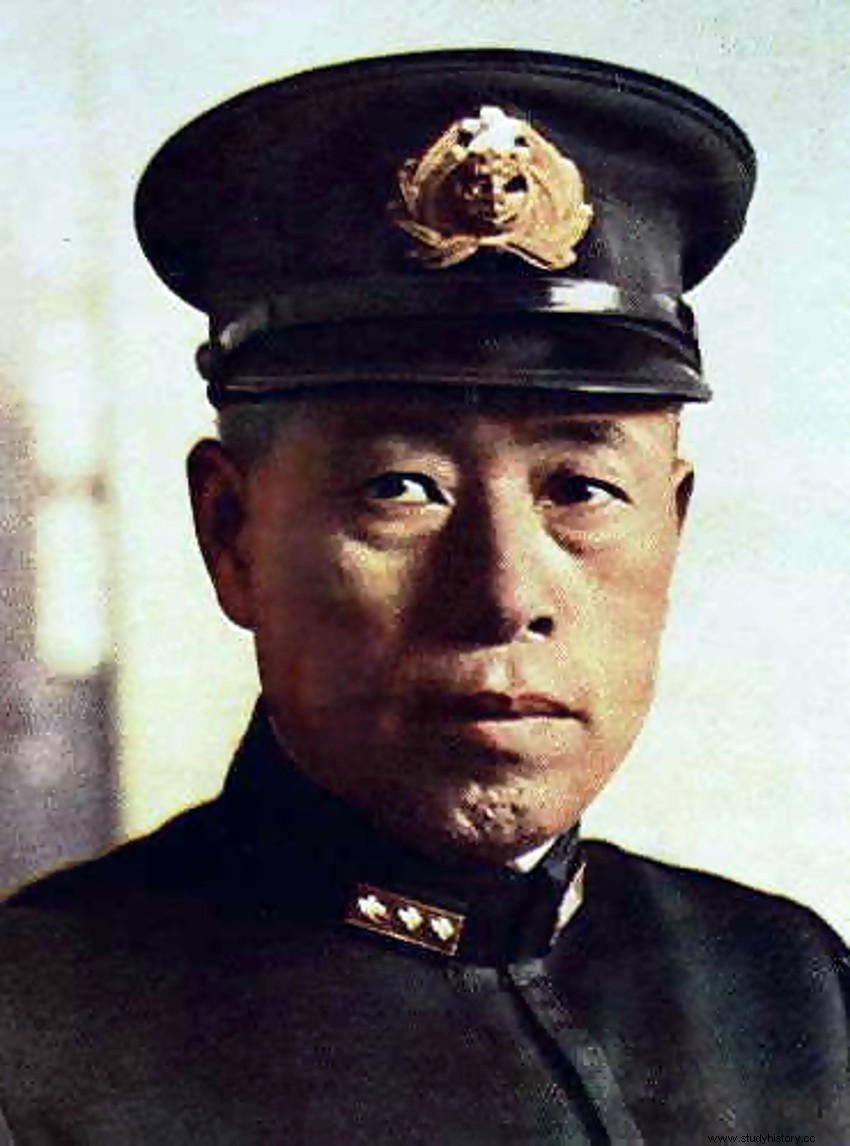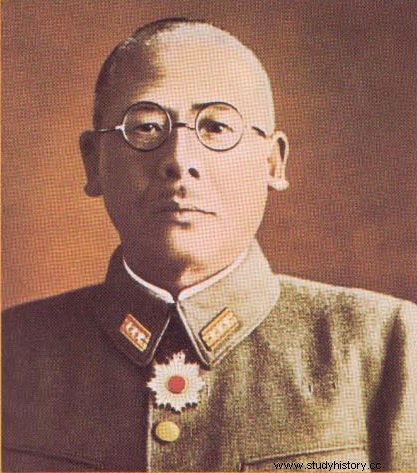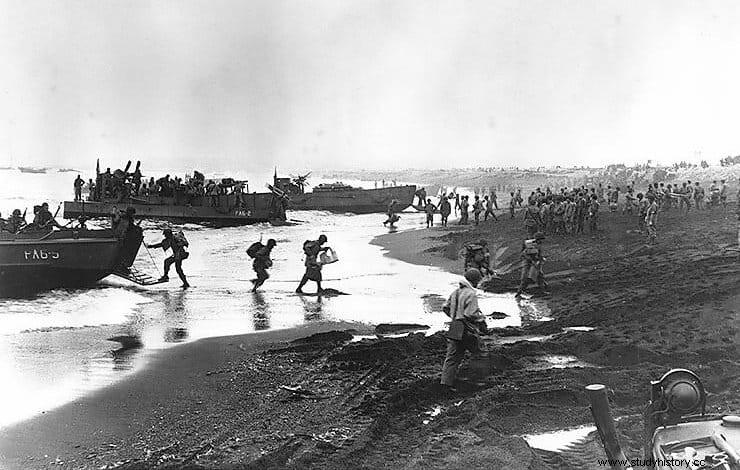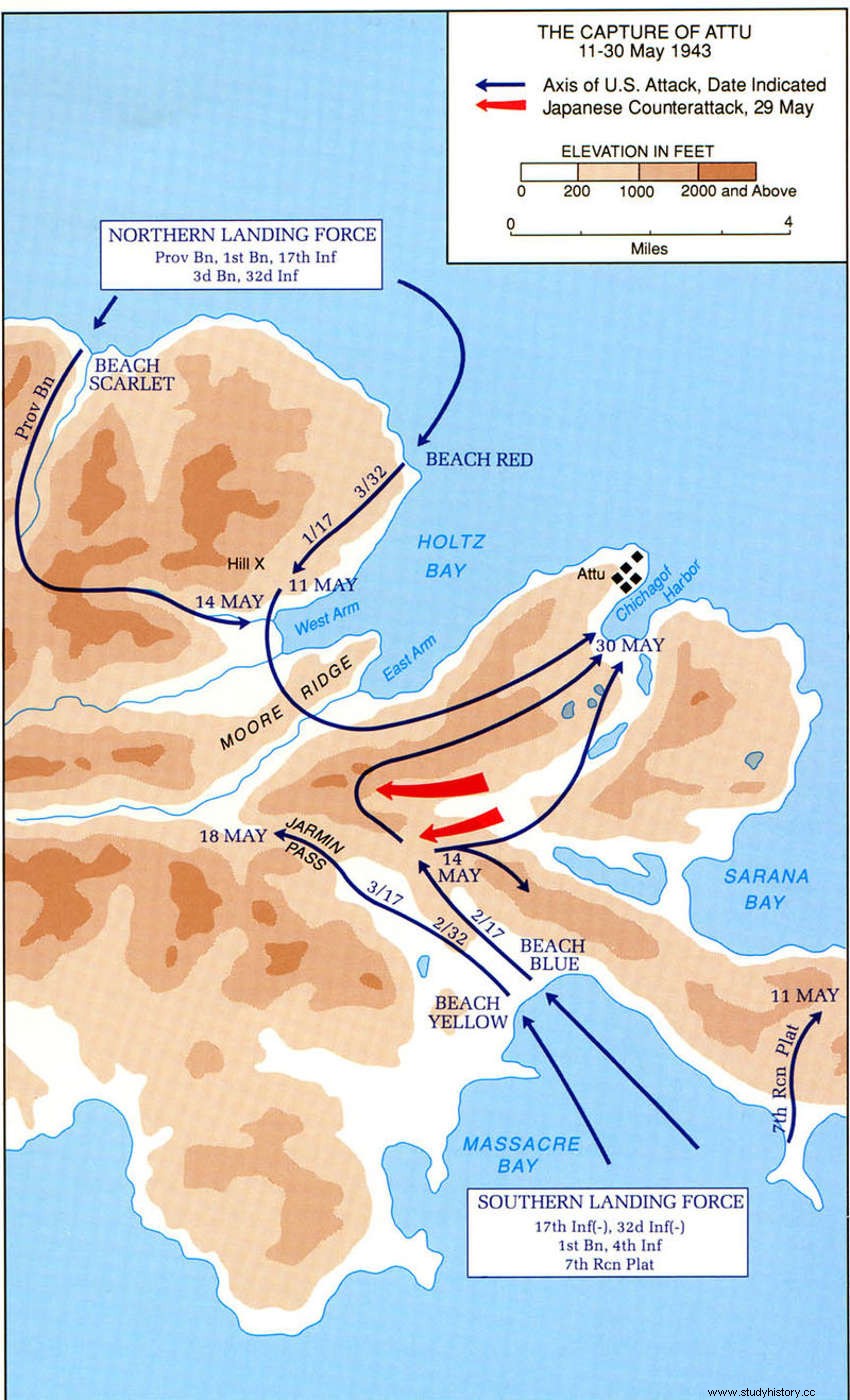A priori It might seem that a place as remote as the Aleutian archipelago was of no interest to World War II fighters.
However, the possession of that insular territory was revealed as a fundamental strategic objective both by its owners, the United States, and by its Japanese enemies and, in fact, some important battles were fought there, grouped generically under the name of Battle of the Aleutian Islands .
One of them took place in Attu and it constitutes the only example of fighting in North America during that conflict, since other places such as the Marshall Islands, Solomon or Guam were considered "unincorporated territories" and their inhabitants were not granted citizenship until after the war; even Hawaii, where Pearl Harbor was attacked, was not a state until 1959.
In mid-1942, Japan's high command was aware of its material inferiority to the US , something that was aggravated by the extension of North American domains throughout the Pacific, which allowed it to have natural bases for its aviation and its navy.

One of those sites was the Midway Islands , an atoll located in the middle of the ocean, not far from Hawaii. Although it had been discovered in 1799 by the Spanish navigatorMiguel Zapiaín (which he baptized it with the name of Patrocinio), in 1867 the sailor William Reynolds annexed them to the US aware of its strategic usefulness for navigation, although he surely never imagined the degree it would reach in that regard.
Because, in fact, in the spring of 1942 Admiral Yamamoto made the decision to try to take the Midway and thus have a priceless natural aircraft carrier from which to operate with more possibilities and incite the enemy to a decisive confrontation that would shorten the war, because the Japanese, who had lived in the US, knew that, in the long run, it would impose its inexhaustible industrial capacity. And for this duel it was necessary to have a good supply point in the middle of nowhere.

Of course, Yamamoto also knew that the Americans weren't going to sit idly by and let the Midways be taken away quietly, so he devised a fun plan to drag his fleet away; the place chosen was the Aleutian Archipelago, a group of more than three hundred volcanic islands which are located in the extreme northwest of North America, forming a kind of arc between Alaska and the Russian peninsula of Kamchatka and separating the Bering Sea from the Pacific Ocean.

In total about 37,800 square kilometers inhabited mostly by Inuit and which, ironically, the Russians sold to the US the same year that Reynolds occupied Midway.
The squad destined for the Aleutians was composed of the aircraft carriers Ryujo and June , the heavy cruisers Maya and Takao , battleships Ise , Fuso and Yamashiro , the light cruiser Abukuma and other transport and supply ships with landing forces.
The first attack occurred on June 3, 1942 with a bombing raid on Unalaska Island; two days later, Japanese troops conquered the island ofKiska and the next day they repeated success with Attu , meeting hardly any resistance.
Suddenly, Japan was taking the war into enemy territory and not only did it deprive it of what was another appreciable base for potential attacks on the Japanese archipelago but, conversely, it was awedge from which the mainland could be attacked. Then the words resounded that, in this sense, General William Mitchell had formulated in 1935 before Congress, saying that Alaska was “the most important strategic place in the world” .

The US had to grit its teeth and control its nerves as it prepared to recapture the Aleutians. In August, the islands of Adak became the point from which the invaders began to be bombarded and in March 1943 a squadron under the command of Rear Admiral Charles McMorris he cut off their supply lines by defeating the ships of Vice Admiral Boshirō Hosogaya in the Battle of the Komandorski Islands.
Colonel Yasuyo Yamasaki's 301st Independent Infantry Battalion of the Northern Army was isolated and with serious supply difficulties. Everything was ready for the reconquest operation by US and Canadian forces.
Thus, on May 11, 1943, after intense naval cannonade, the 7th and 17th Infantry Division commanded by General Albert Brown They launched the assault in the so-called Operation Crab.
They did it from two points, north and south, but it must not have been exactly pleasant for the attackers:as there were not enough landing craft it was necessary to wait for them to return from the beaches to go out again, desperately slowing down the operation and leaving many soldiers, soaking wet, numb with cold waiting for the others in those adverse weather conditions - it's the Arctic, after all.

This favored the Japanese, who were able to organize themselves and received them harshly, causing it to take two weeks to secure a position and start advancing. Slow going, though, as vehicles got stuck in the tundra and snipers were shooting from the hills.
However, little by little Yamasaki was being pocketed in Chichagof Harbor , although he was confident because he had the information that a strong squad was being prepared in Tokyo. that would go to his aid imminently.
If she had, maybe things would have changed, since she really was powerful:the cruisers Mogami, Kumano, Suzuya, Tono, Chikuma, Agano y Ōyodo , battleships Musashi, Kongō and Haruna , eleven destroyers, several troop transports…
But his departure was delayed and on May 29 Yamasaki, assuming help would not arrive in time, launched his troops into a massive attack desperately. His idea was to take Engineer Hill, where the Allies had concentrated their artillery, to turn the cannons against him.

Almost two and a half thousand soldiers, to the classic cry of "Banzai!" , fell upon the Americans by surprise causing heavy casualties and leading to a savage hand-to-hand fight in which there was no quarter; the Asians even skewered the wounded in the field hospital with their bayonets (later it was learned that hundreds of Japanese only had this weapon, having exhausted their ammunition).
But it was still a suicide in practice and most ended up dead, capturing only 28; among them was a single officer, Yamasaki himself. The battlefield is today called Massacre Valley.
There were still small isolated groups They continued to defend themselves tenaciously until they were finally crushed in mid-summer. Having seen the result in Attu and taking into account that the Imperial Navy had not only been unable to prevail in Midway (it had been defeated a year earlier, shortly after occupying the Aleutians) but also that Yamamoto himself had just died When the plane in which it was flying over the Solomon Islands was shot down, the Japanese command decided not to resist in the other occupied island territory, Kiska.
On July 28 he quietly evacuated his tiny garrison (nine men) taking advantage of a dense fog. Even so, as we told in the post dedicated to Operation Cottage, the mines, the cold and friendly fire (a constant throughout the campaign) caused 313 casualties to the North Americans when they landed, partly when a mine exploded in the path of a destroyer; their planes had spent a week bombing an empty island.
Speaking of casualties , the allies exceeded half a thousand dead and just over a thousand wounded in combat, plus another thousand or so sick from the cold. The Japanese suffered 2,351 deaths and the 28 prisoners mentioned.
